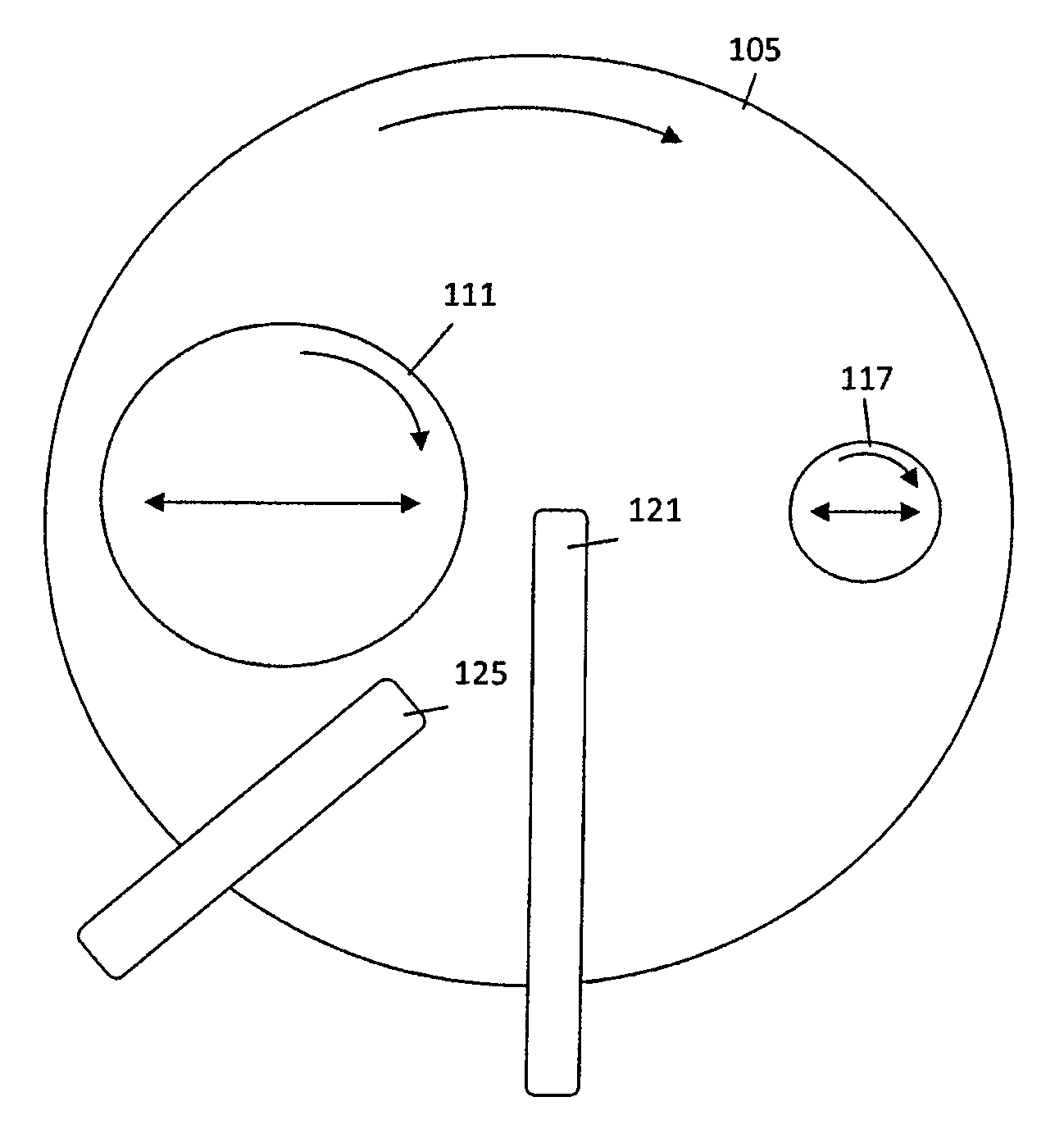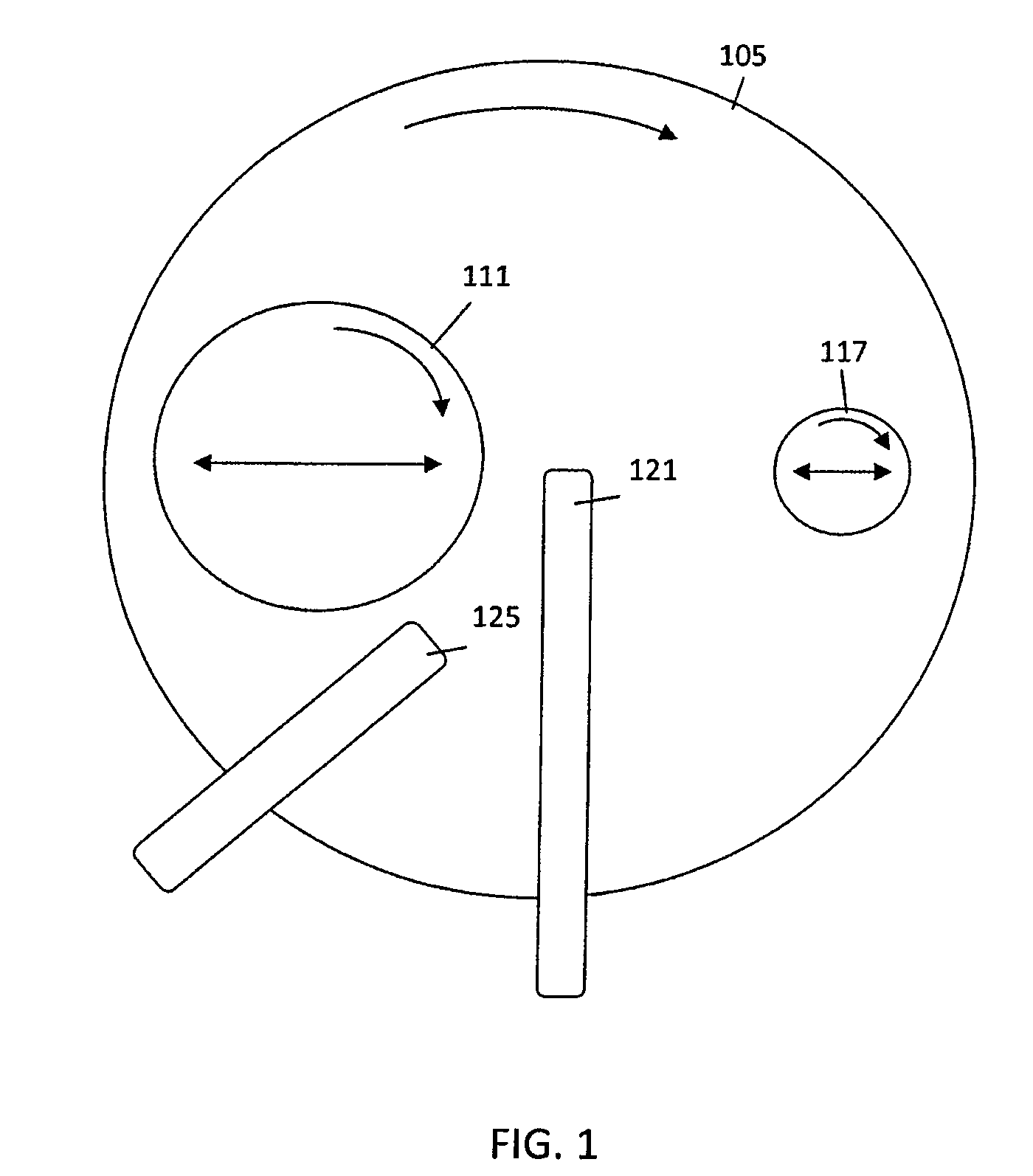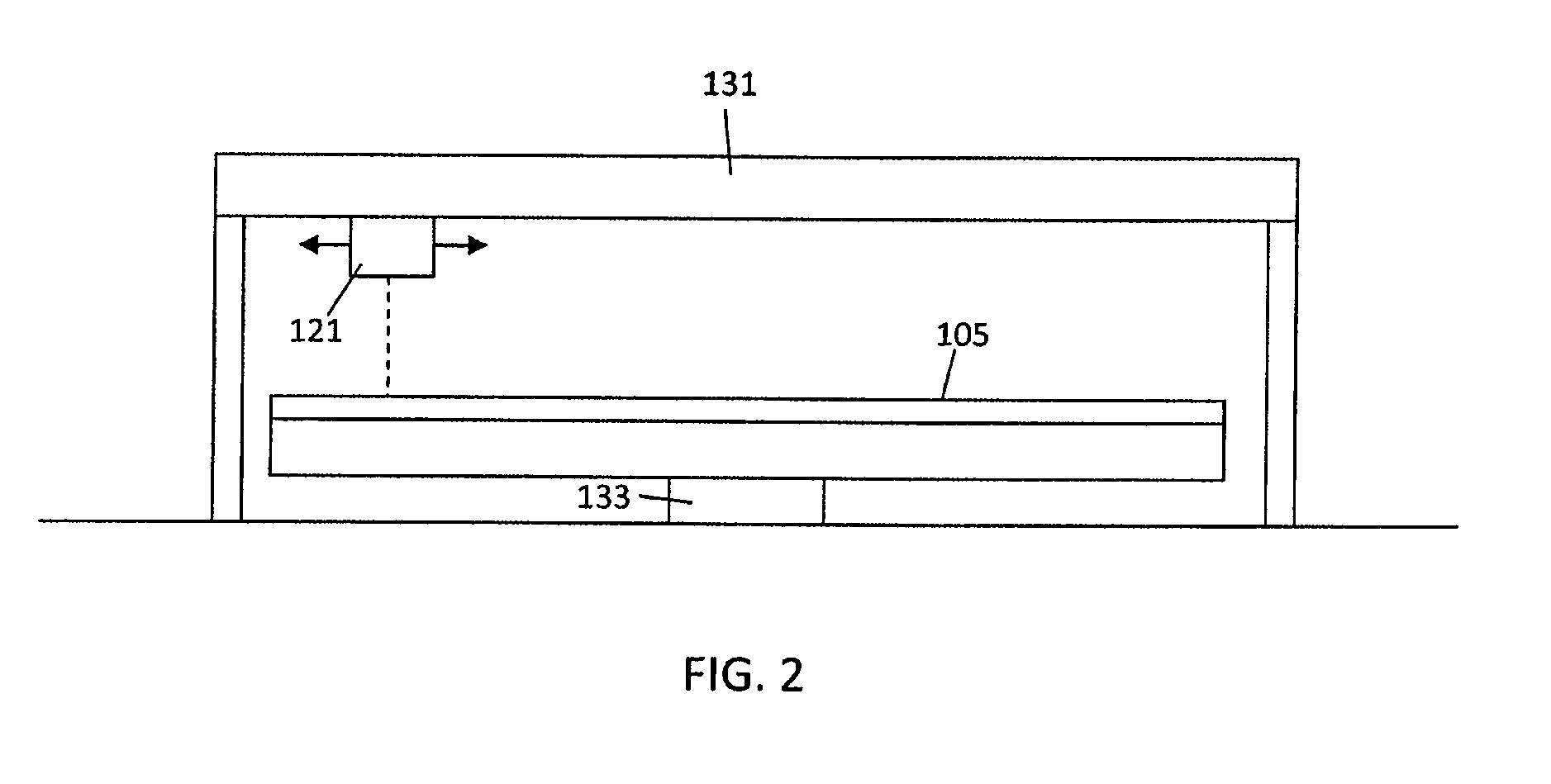Closed loop control of pad profile based on metrology feedback
a closed loop and pad technology, applied in the direction of lapping machines, manufacturing tools, abrasive surface conditioning devices, etc., can solve the problem of radial pattern wear of the disk
- Summary
- Abstract
- Description
- Claims
- Application Information
AI Technical Summary
Benefits of technology
Problems solved by technology
Method used
Image
Examples
Embodiment Construction
[0022]The present invention is directed towards an improved apparatus and method for maintaining a uniform thickness of a polishing pad during CMP processing. The inventive system monitors the thickness of the CMP polishing pad and makes adjustments to the conditioning pad to maintain a uniform polishing pad thickness. With reference to FIG. 1, the inventive CMP system includes a rotating circular polishing pad 105, a wafer carrier mechanism 111, a conditioning disk 117 and a polishing pad metrology system 121. During CMP processing, abrasive slurry is poured onto the polishing pad 105 by a slurry distribution mechanism 125. The wafer carrier mechanism 111 rotates and moves the wafer over the slurry and across the width of the rotating polishing pad 105. The conditioning disk 117 includes an abrasive surface that contacts the polishing pad 105 and removes wafer particles from the polishing surface. The conditioning disk 117 is pressed against the polishing pad 105 and is swept back ...
PUM
| Property | Measurement | Unit |
|---|---|---|
| surface area | aaaaa | aaaaa |
| diameter | aaaaa | aaaaa |
| pressure | aaaaa | aaaaa |
Abstract
Description
Claims
Application Information
 Login to View More
Login to View More - R&D
- Intellectual Property
- Life Sciences
- Materials
- Tech Scout
- Unparalleled Data Quality
- Higher Quality Content
- 60% Fewer Hallucinations
Browse by: Latest US Patents, China's latest patents, Technical Efficacy Thesaurus, Application Domain, Technology Topic, Popular Technical Reports.
© 2025 PatSnap. All rights reserved.Legal|Privacy policy|Modern Slavery Act Transparency Statement|Sitemap|About US| Contact US: help@patsnap.com



